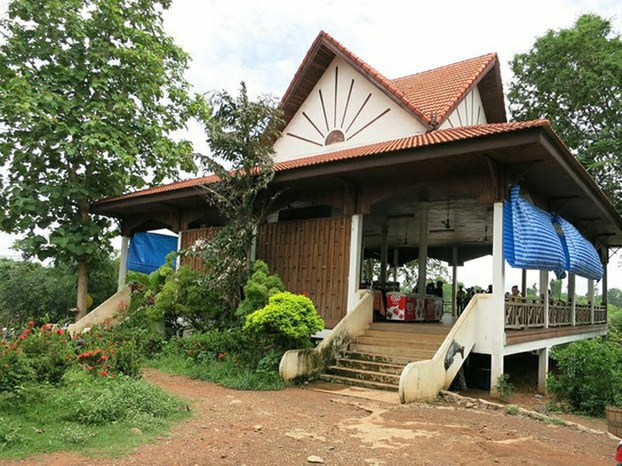




Cambodian authorities have stepped up their efforts to block construction of a Lao military outpost along the two countries’ shared frontier as the dispute threatens to exacerbate an already tense border dispute between the two countries.
Border police told RFA’s Khmer Service on April 17 that Cambodian authorities are stopping Laotian trucks carrying building materials on National Road 7 in an effort to prevent the base’s construction.
“We did not allow the materials, which are to be used for the construction, to be transported in,” Ek Sivandorn, deputy police chief in charge of border affairs, told RFA.
“Now it’s just like they dug the holes for nothing,” he added. “We have National Road 7, so they will have to stop trucking in the materials. National Road 7 is on our soil, so we can stop them.”
Construction on the base in the poorly demarked frontier began around April 1, when the Lao military started trenching for a new base about 30 meters from an unmarked area of the border separating Stung Treng’s Thala Barivat district from Laos’ Champasak province, according to local media.
Officials protest
The building sparked protests from officials in Stung Treng, who say the two countries have agreed to bar construction of new buildings in the area until the border is properly demarcated.
While efforts to demarcate the 540-km long border between Laos and Cambodia began in 2000, they remain incomplete.
The joint border committees of both countries have called for a sixth meeting on maintaining the border, but Steung Treng provincial authorities claim Laos is abusing the agreement.
Provincial authorities have written to the Ministry of Interior asking for help, and the ministry has written to the Cambodia Border Committee seeking an intervention, but their Laotian counterpart has yet to provide a response, they said.
Attempts to contact Va Kim Hong, the official in charge of the special mission of border affairs, were unsuccessful.
When Stung Treng officials visited their Laotian counterparts this week seeking a solution, Laotian officials refused to negotiate and threatened violence if they were prevented from continuing with the construction, provincial spokesman Men Kung said on Friday.
“The stance of the provincial authorities is they must abide by the policies that the government has already set,” he said. “The authorities have to sub-delegate their tasks in the name of the provincial authorities. In the name of the provincial authorities, [we] must protect our integrity and sovereignty.”
More border disputes
This isn't the only border dispute that is engaging Cambodia. In 2015, the government matched a map from France that was issued prior to Cambodian independence in 1953 and a set of 1964 maps from the United Nations delineating the border between Cambodia and Vietnam to its own official chart to dispel allegations that it was giving Vietnam land.
Afterwards, Hun Sen ordered police to arrest anyone who accused the government of using “fake” maps and ceding national territory amid an ongoing political dispute over the demarcation of the country’s border with Vietnam.
The move came after Cambodia’s parliament voted to strip opposition senator Hong Sok Hour of his immunity, prompting criticism from rights groups, after Hun Sen accused him of treason for posting a disputed diplomatic document online relating to the Cambodia’s border with Vietnam. Hong Sok Hour is awaiting trial on the charges.
Thailand and Cambodia have also been in a border spat centered on border temple of Preah Vihear.
The International Court of Justice in 2013 handed Cambodia a partial victory in that dispute when it ruled that Cambodia had sovereignty over the immediate area around the promontory on which the temple sits. The court left unresolved, however, who controls a larger disputed area, where Cambodian and Thai troops have clashed in recent years.
Reported by Chanthey Men for RFA's Khmer Service. Translated by Pagnawath Khun. Written in English by Brooks Boliek.